#Bioleader compostable
Explore tagged Tumblr posts
Text
Sustainable Summer Vibes: Why Compostable Tableware Is the Real Main Character This Season
🌞 Aesthetic Picnics, Food Trucks, and Zero-Waste Goals
It’s not just the outfits that are getting an upgrade this summer — it’s the way we eat, party, and takeout. Across the U.S., from artsy pop-up markets in Portland to rooftop BBQs in Brooklyn, there’s a quiet revolution underway: single-use plastics are out, and biodegradable tableware is in.
Welcome to the season where compostable packaging like the cornstarch box isn’t just an eco-choice — it’s part of the vibe.
✨ Why Summer 2025 Is All About the Switch
We’ve hit a cultural moment where sustainability and aesthetics are finally in sync. No one wants a dreamy picnic reel interrupted by a crinkly plastic fork. Instead, we’re seeing:
Minimalist cornstarch food containers replacing plastic trays
Soft-toned compostable cups nestled next to wildflower bouquets
Picnic blankets layered with farm-to-table bites — all waste-free
People aren’t just eating clean. They’re living clean.

🍴 What’s the Deal with Cornstarch Packaging?
Cornstarch clamshells and containers are made from — you guessed it — corn starch. They’re strong enough to hold your hot vegan tacos, your sesame soba salad, or that gooey brownie with no leaks. And unlike plastic, they actually break down.
They look good, feel good, and let you walk away from your lunch without climate guilt. That’s the real power move of 2025.
🎉 From Rooftops to Festivals: Where It’s Trending
🌇 Urban Picnics
Everyone’s bringing their own basket — and in it? Locally made bites packed in cornstarch boxes. It’s the perfect match for your recycled denim and iced matcha aesthetic.
🎶 Music Festivals
Coachella might have the music, but the food scene? It’s ruled by vendors using cornstarch food containers and plant-based cutlery. When your snack is photogenic and biodegradable, you know you’re winning.
🏡 Backyard BBQs
It’s still burgers and lemonade — just with less trash. Compostable plates. Reusable drink jars. Friends who know where the compost bin is. Love to see it.
📦 Takeout That Matches Your Values
You shouldn’t have to choose between convenience and conscience. And this summer, you don’t have to. More local cafés and global food chains are switching to cornstarch clamshells and earth-friendly wraps. It’s takeout without the plastic hangover.
Imagine this: ✨ Avocado toast in a corn-based tray ✨ Cold soba in a fiber lid bowl ✨ Sticker says: “I’m compostable, just like your ex’s promises”
Satisfying and sarcastic. Tumblr-worthy? Definitely.

🌱 How It’s Helping the Planet (But Make It Fashion)
Let’s be honest — we all love looking good while doing good. And when you ditch plastic for cornstarch food containers, you’re not just making a cute lunchbox choice. You’re:
Reducing microplastics
Supporting renewable resources
Saying no to fossil fuel–based materials
Turning your brunch into an eco statement
And yes — it looks better in your feed, too.
📈 Why This Isn’t Just a Trend
Sure, it’s having a moment. But biodegradable packaging is also becoming the default. More cities are banning plastics. More festivals are going zero waste. And more people (hi, that’s us) care about what happens after the food is gone.
Cornstarch boxes are the new neutral. They go with every outfit, every dish, and every lifestyle choice that leans green.
🔁 What You Can Do
Next time you order out, ask if they have compostable options
Hosting a summer hangout? Stock up on cornstarch clamshells and eco forks
Share your aesthetic zero-waste setup — tag #GreenSummer
Support brands like Bioleader that offer compostable tableware in bulk for events or everyday use
🌻 Final Thought: Romanticize Your Summer, Sustainably
The picnic blanket. The thrifted dress. The iced oat latte. The biodegradable fork. This isn’t just an aesthetic — it’s a mindset. The kind that makes your summer not only look good, but do good.
So go ahead: unbox your vegan wrap in a cornstarch box, snap the pic, and toss it in the compost. Because this summer, sustainability isn’t a side dish — it’s the main course. 💚
#cornstarch box#cornstarch food containers#cornstarch clamshell#biodegradable packaging#aesthetic picnic ideas#summer sustainability#zero waste takeout#green lifestyle 2025#compostable cutlery#eco dining trends#plastic-free festivals#tumblr picnic#outdoor aesthetic picnic#Bioleader compostable#compostable picnic containers
0 notes
Text
The Future of Takeout Starts with Compostable Packaging ♻️
In 2025, takeaway food isn’t just about flavor—it’s about responsibility. More people are asking: “What happens to my food container after I’m done?”
🌿 Enter bagasse trays—made from sugarcane waste, these compostable heroes are replacing plastic in restaurants and cafés worldwide. Sturdy, microwave-safe, and earth-friendly, they’re the perfect match for eco-conscious food delivery.
Leading the way is Bioleader’s Bagasse Tray with Lid, designed for hot meals, bento boxes, and anything saucy. It keeps food fresh and separated—and disappears into the soil within 90 days.
✨ Want more? Their full bagasse tray with lid collection features different sizes for noodles, curry, burgers, and beyond.
Say goodbye to plastic, and hello to packaging that actually respects the planet. 🌎
Because the future of takeout should taste good and feel good.
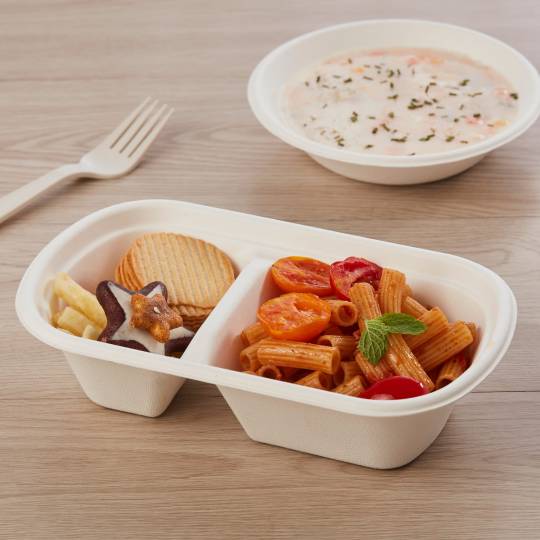
#EcoPackaging#Compostable#TakeoutTrends#Bioleader#BagasseTray#SustainableLiving#FoodDelivery#PlasticFree
0 notes
Text
45 Days to Gone: Why Bagasse Is the Future of Takeout 🌱
Still tossing out plastic containers like it’s 1999? Let’s talk about something smarter. Something plant-based, microwave-safe, leak-proof—and gone in just 45 days under composting conditions.
Say hello to bagasse: the humble sugarcane fiber that’s redefining what sustainable takeout looks like.
💡 What Is Bagasse?
It’s what’s left after sugarcane juice is extracted. Instead of throwing that fibrous stuff away, it’s pressed into plates, bowls, clamshell boxes, and trays. Think of it as nature’s version of upcycling—with bonus eco points.

⏳ So... How Fast Does It Break Down?
If you compost it right, bagasse products break down in 45–90 days. That’s less time than it takes you to forget your Netflix password.
Here’s the breakdown (literally):
Industrial composting: 45–60 days
Home composting: Around 90 days
Landfill (not ideal): Slower, but still much faster than plastic
Plastic takeaway box: Try 400–500 years 😬

🥡 Real Talk: Why It’s Perfect for Takeout
Takeout doesn’t have to mean trash.
Bagasse holds up under pressure. It’s microwave-friendly. It handles sauces, soups, stir-fry, and greasy street food like a pro.
You’ve probably already used bagasse without knowing it—in:
Your favorite poke bowl or grain bowl spot
Eco cafes serving sandwiches and salads
That sushi place with surprisingly stylish packaging
Pop-up food trucks that care about the planet
🌍 Enter: Bioleader®
Not all bagasse is created equal.
At Bioleader, we craft 100% compostable bagasse tableware—free from plastic linings, PFAS, or mystery coatings. Whether it’s a 9" plate for family dinner or a bagasse burger clamshell for your food truck, we make sustainable swaps simple, elegant, and affordable.
When you choose Bioleader, you’re not just buying packaging. You’re investing in:
✅ Compost-ready materials ✅ Strong, reliable design ✅ Ethical production from sugarcane byproducts ✅ Certified sustainability (not greenwashing)
📦 Before You Order Takeout Again...
Check the bottom of the box.
If it’s Bioleader® bagasse, it’ll be gone before next season. 🌾 If it’s plastic, well... it’ll be here longer than your TikTok feed.
📢 Let’s Normalize Compostable Takeout.
Tag your favorite local restaurant and tell them:
“Time to go bagasse or go home.”
#bagasse#sustainabletakeout#compostable#biodegradable#bioleader#zerowaste#sugarcaneproducts#greenliving#ecopackaging#tumblrgreen
0 notes
Text
🌞 Grills, Greens & Good Vibes: How Summer in the U.S. Is Getting a Healthy Makeover
From fireworks to fresh bowls, this summer’s all about eating clean and living green—with compostable packaging in tow.
There’s something magical about American summers. The smoky scent of BBQs in the air, iced tea on the porch, kids chasing fireflies, and the unmistakable pop of fireworks lighting up the July sky.
But this year, something’s different.
This summer, it’s not just about good times—it’s about good choices. From food to packaging, more people are choosing fresh, healthy meals and ditching plastic for compostable paper food containers and stylish Kraft paper boxes. Yep, sustainability just crashed the party—and we’re here for it.
🥗 Summer Feels, But Make It Fresh
Let’s talk food first. American summer classics like cheeseburgers and coleslaw still have a place at the table—but they’ve made room for some trendy newcomers.
Our current summer crushes:
Kale, strawberry & walnut salad in a minimalist paper food box
Plant-based sliders with spicy aioli
Cold soba noodle bowls with sesame seeds
Grilled peaches with almond ricotta
Infused cucumber water in reusable tumblers
And if you’re headed to the beach, hiking trail, or local park? Pack it all up in a takeaway food box that won’t wreck the planet. Bye-bye, soggy foam containers.

🎆 Red, White, Blue... and Green?
Fourth of July used to mean glittery flags and red solo cups. Now? It’s reusable decor, plant-based BBQs, and compost bins under the picnic table.
What’s changing?
Hosts are setting up zero-waste party zones
Food is pre-packed in eco-friendly paper food containers
Guests go home with leftovers in a sleek Kraft paper box
Teens are sharing their green setups on TikTok (yep, sustainability is trending)
Sustainability isn’t a buzzword anymore—it’s the new default. If your burger’s not served in a biodegradable paper food box, did it even happen?
🚗 Road Trips & Reusables
Let’s be honest: American summers = road trips. But that doesn’t mean gas station junk food has to be your only option. Pack your snacks like a pro:
Road trip must-haves:
Hummus and veggie sticks in a sealed paper food container
Berries and granola in a Kraft-look lunch box
DIY trail mix (almonds, cranberries, dark chocolate)
Sandwiches wrapped in compostable wraps, stashed in a takeaway food box
Bonus: Your car smells like real food, not plastic wrappers.
👨👩👧👦 Family Vibes with a Green Twist
Summer is family season—reunions, pool parties, and lazy Sunday cookouts. It’s also a great time to teach kids how fun sustainability can be.
Try this:
Give every kid their own Kraft paper box to decorate as their “party plate”
Set up a “trash or compost?” challenge after dinner
Let them pack their own meals in paper food containers for the park
Trust us—they’ll be into it. (Especially if stickers are involved.)

🌱 Small Swaps, Big Vibes
It’s not about being perfect. It’s about making small swaps that add up—especially during moments that matter most, like summer memories with the people you love.
Instead of:
Plastic plates → compostable paper food boxes
Foil trays → chic Kraft paper containers
Plastic forks → biodegradable cutlery
Eco can be easy. And actually kind of aesthetic.
✨ Tumblr Aesthetic Bonus
Eco-friendly table spreads are basically made for Tumblr:
Sunlight peeking through reusable fabric bunting
Mason jars filled with lemon-mint water
Grain bowls in kraft packaging arranged on a floral blanket
A handwritten chalkboard menu next to a compost bin
Tag it: #greenpicnic #plantbasedsummer #kraftcore
☀️ Final Thought
You don’t need to overhaul your whole life. Start with one meal, one picnic, one takeaway food box. Start where it feels good. Celebrate summer—but make it mindful, make it fresh, and make it kind to the planet.
Because burgers taste better when they’re served with a side of conscience.
#summer aesthetic USA#healthy picnic ideas#takeaway food box#paper food box#paper food containers#Kraft paper box#green BBQ vibes#zero waste July 4th#compostable lunch boxes#eco road trip snacks#Tumblr picnic inspiration#sustainable food style#plant based summer recipes#biodegradable packaging#Bioleader eco products
0 notes
Text
Soup, Sustainability & Self-Expression: Why Eco Tableware Is the New Cool
Sometimes, a Soup Bowl Says More Than a Selfie
Let’s be real—2025 is weird in the best way. We’re curating our Spotify picnics, manifesting under full moons, and yes—judging your soup bowl at the weekend market. Because everything now says something about who you are, right down to what your soup is served in.
This summer, from L.A. food trucks to Brooklyn rooftops, there’s a quiet revolution happening. People are switching out plastic containers for something that feels better—literally and ethically. And companies like Bioleader, a leading paper soup containers manufacturer, are suddenly in your aesthetic toolkit.

Food is Vibes. And So Is the Packaging.
You wouldn’t drink kombucha out of a plastic cup. So why would you eat that artisan mushroom barley soup in a Styrofoam tub?
Today, packaging is more than packaging—it’s a vibe check. A matte-finished, compostable paper soup container just feels like it belongs next to your handmade ceramic mug and thrifted denim. Bonus: it won’t destroy the planet.
Bioleader gets that. As a trusted paper soup containers manufacturer, they’re designing compostable containers that hold heat, don’t leak, and actually look good on camera. Think: neutral tones, clean curves, and zero guilt.

Hot Girl Soup Season Is Here
Blame it on TikTok, but “Hot Girl Soup” is trending—along with hot guy ramen, gender-free gumbo, and every kind of outdoor comfort meal imaginable. Whether it’s:
A campsite miso moment
A hangover cure brunch on your fire escape
A Sunday hang with vintage sweaters and spicy lentil bowls
Your container is part of the experience. It’s part of the story.
Culture Check: Gen Z Isn’t Playing Around
We’ve grown up with climate anxiety. We’re done waiting for corporations to “do better.” We vote with our wallets, our TikToks, and our blog posts. That’s why more local cafés, pop-up vendors, and cozy corners at flea markets are turning to Bioleader. Not just because the containers are cute—but because they align with our values.
Sustainable is sexy. Compostable is cool. Functional is non-negotiable.
Eating Outdoors Feels Like a Protest (In a Good Way)
There’s something rebellious about a picnic these days. It’s not about luxury—it’s about reclaiming joy in a chaotic world. A reusable fork. A bowl that breaks down in a compost pile. A moment with friends that doesn’t leave behind plastic shame.
Bioleader’s paper soup containers fit right in. Whether you’re ladling vegan chili at a mutual aid station or slurping stew at an indie zine release, it’s the tiny details that matter. And people notice.
Not Just for Vendors—For You, Too
You don’t need to run a soup truck to care about your containers. You just need to care.
Hosting a zine night? Doing a “cozy food drop-off” for your sick roommate? Planning an outdoor poetry brunch?
Grab a stack of compostable containers. They say, “I showed up. And I gave a damn.”
Soup, But Make It Ethical
The next time someone offers you soup at an event, take a second. Feel the container. If it’s warm, sturdy, and doesn’t smell like chemicals, smile—you might be holding something made by Bioleader, the paper soup containers manufacturer helping redefine how we eat, feel, and act.
Because in 2025, we’re not just feeding bodies. We’re feeding a movement.
#eco lifestyle#aesthetic tableware#sustainable packaging#Bioleader#paper soup containers manufacturer#zero waste picnic#gen z culture#outdoor soup trend#compostable food containers#indie food scene#cozy food tumblr#ethical eating#soup aesthetic#plastic free living#soup container inspo
0 notes
Text
What’s in the Bowl Matters: Why Eco-Friendly Packaging Is the Real Takeout Trend
So, you just ordered spicy Thai coconut curry from that cozy corner place downtown. You’re already thinking about the flavor bomb waiting inside—but then it arrives, and before the first bite, you pause.
It’s the bowl. Not flimsy plastic. Not sad Styrofoam. But something different.
It’s sturdy, warm to the touch, and matte, not shiny. And maybe, just maybe, it makes your curry look... better?
Welcome to 2025, where paper soup bowls aren’t just vessels. They’re statements.

The Quiet Revolution in Your Delivery Bag
We’re deep into a delivery-first world. Between long office hours, hybrid jobs, and digital-first everything, the average American is now ordering food 4–5 times a week. But takeout culture is growing up.
No more neon plastic lids or greasy boxes. Food delivery now comes with aesthetic, texture, and... values.
That new poke bowl? It arrives in a natural-fiber bowl with a compostable lid. That mushroom risotto you love? It’s snug inside a breathable, microwaveable paper soup bowl that doesn’t trap steam and ruin the rice.
And yes—it feels better.
Because food doesn’t live in a vacuum anymore. We photograph it. We post it. We watch others unbox it on TikTok. And the packaging? It matters.
Real Talk: Plastic Packaging Kills the Mood
Let’s be honest:
Plastic makes hot soup feel like leftovers.
Foam screams 1999.
And cardboard with a waxy interior is a gamble every time.
Enter Bioleader, one of the few brands out here actually getting it right. Their paper soup bowls are low-key perfect: greaseproof, heat-safe, and compostable without falling apart in your lap.
They’ve popped up at vegan trucks in Portland, hip fusion pop-ups in Brooklyn, and even that one fried chicken ghost kitchen with 1M TikTok followers. You know the one.
No shouty branding. Just form, function, and food that feels loved.
Tumblr Vibe: Aesthetic, but Make It Compostable
Here’s what we’re seeing in 2025:
Close-up shots of chili lime ramen in palm-sized kraft bowls
Moodboards of lunch carts with handwritten menus and zero plastic
Photo dumps that go from food > fork > finished > empty Bioleader bowl
It’s the return of slow consumption in a fast world. And packaging is the quiet hero.
Because when your meal is served in something compostable, it says: “I care about more than the calories.”
It says: “This isn’t just food—it’s a choice.”
What the Bowl Says About the Brand
We’re in a new age of brand storytelling. Logos matter, sure—but what matters more is the medium.
Is it compostable?
Is it leak-proof?
Will it photograph well?
If the answer’s yes, your brand just leveled up.
That’s why so many indie kitchens are switching to paper soup bowls. Especially the ones from Bioleader—minimalist design, maximum quality. They’re the new merch. Only edible.

Final Bite
In a world full of food noise, sometimes it’s the quiet things that stand out. A bowl that holds warmth, doesn’t guilt you with waste, and feels good in your hands?
That’s the new luxury.
So next time you reach for that delivery bag, pause. Look at the bowl. What it’s made of, where it’s going, and what it tells the world about how you eat.
Because in 2025, the real flex isn’t just flavor—it’s intention.
#paper soup bowls#food delivery trend 2025#eco friendly food packaging#Bioleader bowls#sustainable takeout#Tumblr food trend#aesthetic food containers#compostable soup bowl#plant based packaging#packaging design food#zero waste food culture#minimal food branding#soup bowl aesthetic#biodegradable takeout containers#food packaging that goes viral
0 notes
Text
Bioleader: Your Trusted Manufacturer of Biodegradable Paper Salad Bowls in China
In today’s fast-paced food delivery world, sustainability is no longer optional—it’s essential. Bioleader, based in Xiamen, China, is leading the shift toward plastic-free solutions with its biodegradable paper salad bowls designed for modern takeaway and catering businesses.
Why Paper Salad Bowls?
Crafted from FSC®-certified kraft paper, Bioleader’s salad bowls are sturdy, grease-resistant, and come with clear lids (PET, PP, or PLA). These bowls are ideal for healthy salads, poke bowls, cold pasta, and grain meals. Sizes range from 500ml to 1500ml and support custom branding with food-safe water-based inks.
Product Highlights:
Leak-proof & durable for both deli and delivery
Eco-friendly inner linings: optional compostable PLA or aqueous coatings
Custom logo printing available
Stackable, freezer-safe, and visually appealing on shelf
Whether you run a café, a salad chain, or a ready-meal brand, these paper salad bowls balance functionality, sustainability, and aesthetics.
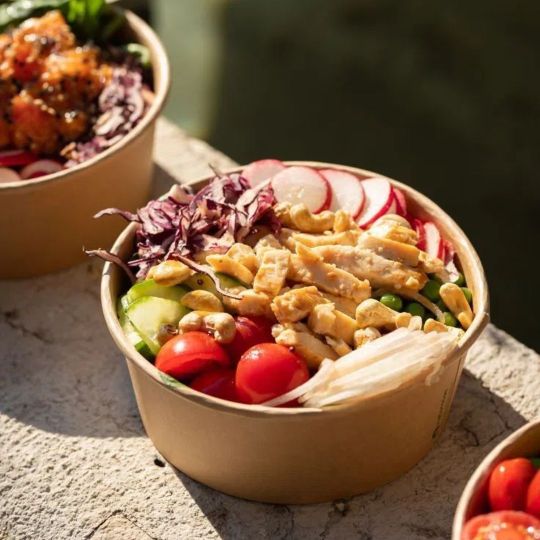
Production & Certifications
Bioleader operates an advanced factory with fully automated forming and lid-fitting machines. Daily production exceeds 100,000 units, ensuring fast turnaround even for large-volume orders.
Certifications include:
FSC® for sustainable sourcing
BRC, ISO9001, ISO22000 for food safety
FDA / EU 10/2011 for global compliance
TÜV Austria (EN13432) for compostability (select models)
Trusted Globally
Bioleader exports to over 30 countries, working with foodservice brands, distributors, and eco-conscious retailers. Clients value the factory-direct pricing, fast communication, and consistent product quality.
“Strong build, no leaks, and our custom logo looks perfect on the kraft finish. Bioleader’s team is always on point.” — Procurement Manager, European Salad Chain
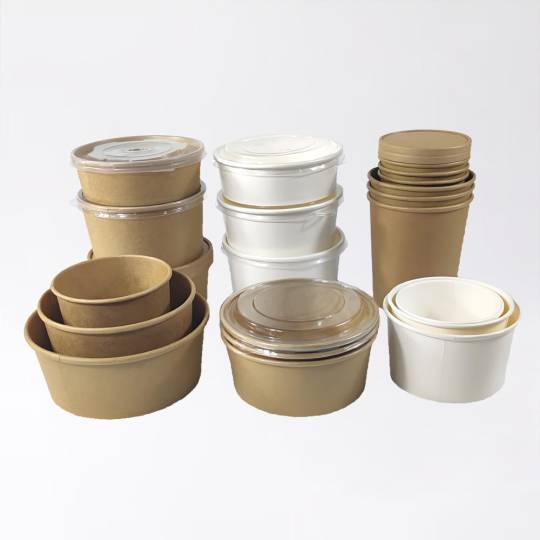
Ready to Switch?
If your brand is seeking eco-friendly paper salad bowl suppliers, Bioleader offers:
Certified biodegradable packaging
Customization for your brand
Reliable OEM/ODM support
Export-ready logistics and service
Make your food packaging part of the sustainability solution—with Bioleader.
#biodegradable paper salad bowls#paper salad bowl manufacturer#kraft paper salad bowls with lids#eco-friendly food packaging supplier#FSC certified paper bowls#compostable takeaway containers#paper food container wholesale#sustainable packaging manufacturer China#clear lid salad bowls#custom printed salad bowls
0 notes
Text
Top 5 PLA Cups Manufacturers in the World (2025)
Say goodbye to plastic—PLA is here to stay. As global brands transition to compostable packaging, PLA cups are now the go-to solution for iced coffee, smoothies, fruit teas, and even eco-events.
But who’s actually making these planet-friendly cups?
We’ve rounded up the Top 5 PLA cup manufacturers in the world in 2025. These companies are not only certified and scalable—they’re also shaping the future of sustainable drinkware.
What’s a PLA Cup, and Why Should You Care?
PLA (Polylactic Acid) is a biodegradable plastic made from renewable plant starch. It’s crystal-clear, safe for food contact, and fully compostable in industrial settings.
PLA cups look like plastic, feel like plastic—but don’t stick around for 500 years like plastic.
Types of PLA Cups:
Classic cold drink cups (8oz–32oz)
Dome lid smoothie cups
Printed brand cups
CPLA versions (for warm drinks)
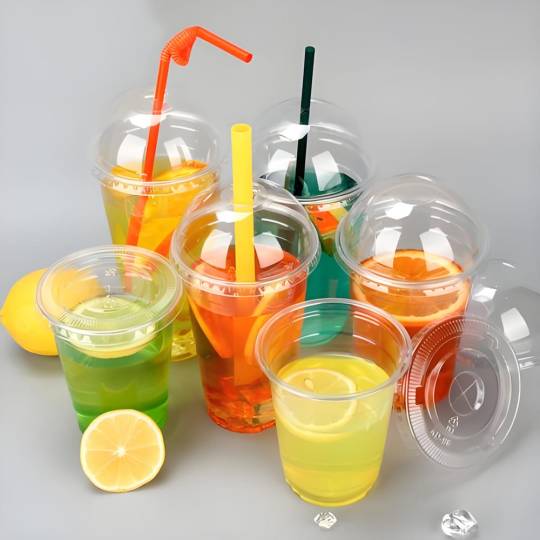
🏆 Top 5 PLA Cups Manufacturers (2025 Edition)
Here’s who’s setting the standard for clean, compostable cups this year:
🥇 1. Bioleader – Xiamen Bioleader Environmental Protection Technology Co., Ltd.
When it comes to high-quality, export-ready PLA cups, Bioleader is the name that keeps coming up.
What they make:
PLA clear cups in all sizes
Dome lids, flat lids, straws
Private-label printed cups for cafés and retailers
Why they stand out:
Certified by BRC, FDA, OK Compost, EN13432
Serves 40+ countries across Europe, the Middle East, and North America
Fast OEM, low MOQs, and flexible custom options
Location: Xiamen, China Team: 130+ employees Contact: Mr. Junso Zhang Website: www.bioleaderpack.com

🥈 2. Goodmade Packaging (USA)
Based on the U.S. East and West Coasts, Goodmade produces PLA cold cups for national foodservice brands. They’re BPI-certified and strong on delivery speed.
Edge: Fast fulfillment, reliable domestic supply Clients: Juice chains, fast-casual restaurants, coffee roasters
🥉 3. Zhiben EcoTech (China)
With sleek molded designs and bamboo-fiber innovations, Zhiben is a go-to for upscale, design-driven drink brands. They’re publicly listed and known for patented packaging.
Best for: Premium drinks, cafés that care about aesthetics HQ: Shenzhen, China
🌱 4. NatureCups GmbH (Germany)
This EU-based company offers clean, simple, DIN-certified PLA cups that fit right into Europe's zero-waste food scene.
Pros:
EN13432 + DIN Certco approved
Based in Hamburg
Ideal for eco cafes, festival vendors, green retail
🌏 5. PlantPak International (USA)
PlantPak brings sustainable packaging to the mainstream with compostable cups, cutlery, and trays. Focused on U.S. buyers, they offer clear PLA cups in stock and ready to ship.
Popular with: Institutional foodservice, office cafeterias, U.S.-based wholesalers
Quick Recap:
RankBrand NameStrengthBest For1BioleaderCertified, export-ready OEM cupsGlobal food & beverage brands2Goodmade PackagingFast U.S. delivery, BPI certifiedNational restaurant groups3Zhiben EcoTechPremium design, molded packagingBoutique cafés, upscale drinks4NatureCups GmbHClean design, EU complianceEco-conscious European cafés5PlantPak InternationalU.S. supply chain + compostable lineInstitutional foodservice buyers
Why This Matters
PLA cups are the new normal for iced drinks
Compostable + stylish = better customer experience
These top brands are leading the charge in sustainable packaging
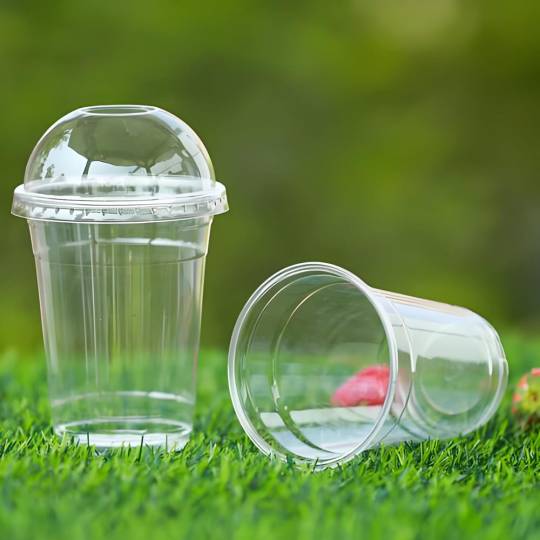
Final Word
Looking to ditch plastic and upgrade your takeaway cups? Start with one of these 5 trusted PLA cup manufacturers—they’re setting the global standard in 2025.
#PLAcups#CompostablePackaging#BiodegradableDrinkware#EcoFriendlyCups#SustainableSuppliers#DrinkPackagingManufacturer#BuyPLAWholesale#FoodServicePackaging#GreenCups2025#TopCupBrands
0 notes
Text
Soup, Sustainability, and Street Food: Why Eco-Friendly Bowls Matter More Than Ever
🌍 Soup Around the World, Served Sustainably
Let’s be honest—nothing hits the spot like a steaming bowl of soup. Whether it’s pho in Hanoi, laksa in Singapore, ramen in Tokyo, or tomato bisque in San Francisco, soup has become more than a comfort food. It’s a global favorite, a daily go-to, and for many people, a takeout staple.
But here’s something that’s often overlooked: what’s holding your soup?
As we order more meals to-go, especially hot and liquid-based ones, packaging waste has skyrocketed. The plastic, foam, or wax-lined containers we barely notice often end up harming oceans and clogging landfills.
Thankfully, a quiet revolution is brewing—and it starts with a humble switch: paper soup bowls.
🍲 The Takeout Dilemma
Modern life is fast. We grab soup on our lunch break, order curry for dinner, or stock up on stew during a winter walk. Takeout culture is growing—and soup is surprisingly high on the global delivery list.
But soup is messy. It's hot, often oily, and prone to leaking. That’s why most restaurants default to plastic-lined containers or foam bowls. They work—but at a high cost to the planet.
Most plastic containers take centuries to break down. Even "recyclable" ones often never get recycled due to food contamination or poor local sorting systems.
So what’s the solution?
🌿 Paper Soup Containers: The Eco Upgrade We All Need
Enter the new generation of paper soup containers. These aren’t flimsy paper cups. They’re thick, heat-resistant, leak-proof, and most importantly—compostable.
Here’s why they’re winning hearts (and stomachs):
Microwave safe for reheating leftovers
Plastic-free coatings (like PLA or water-based)
Sturdy enough to hold pho, curry, stew, or chowder
Break down naturally in compost within 60–90 days
Often made by certified paper soup containers manufacturers who follow strict eco-standards
They're practical for businesses and friendly for the planet. And yes—they still look really cute in a flat lay food photo on Tumblr 😉

✈️ Take a World Tour (One Bowl at a Time)
Let’s look at how soup and sustainability collide beautifully around the world:
🇻🇳 Vietnam
Street vendors serving hot bowls of pho are switching to biodegradable containers as plastic bans expand across cities like Hanoi and Ho Chi Minh.
🇯🇵 Japan
Takeaway ramen is booming—but so is awareness around PFAS (aka “forever chemicals”). That’s why paper soup bowls with certified PFAS-free coatings are gaining popularity.
🇺🇸 USA
From New York food trucks to LA vegan cafés, customers are requesting eco-friendly packaging. Paper soup containers are becoming the new norm for lentil stew, creamy chowders, and bone broth to-go.
🇮🇳 India
Spicy dals and rich curries are traditionally packed in plastic—but cities like Mumbai and Bangalore are moving fast toward compostable options. Local paper soup bowls manufacturers are answering the call.
🌟 Why This Switch Actually Matters
Changing one bowl might seem small—but multiplied across millions of meals a day, it adds up.
Imagine this: if just 1,000 restaurants switched to compostable paper soup containers, they'd eliminate tons of plastic waste every month. That’s fewer turtles swallowing lids. Fewer forests covered in takeout trash. And fewer regrets with every bite.
Bonus? Customers notice. In a world where people vote with their wallets, sustainable packaging is a statement. It says, “We care.”

🛍️ What to Look for in Eco Soup Packaging
Not all paper bowls are equal. Here’s what to check before buying or choosing a supplier:
Compostable certification (e.g., ASTM D6400 or EN13432)
PFAS-free (to avoid health risks)
Leak-proof and oil-resistant
Offered by a trusted paper soup bowls manufacturer
Available with lids for delivery or travel use
If you’re a café, food truck, or home chef with a side hustle, choosing the right container makes all the difference—for your soup and your brand.
💚 Shoutout to Bioleader®
One brand we’ve seen doing this well is Bioleader®—an experienced paper soup containers manufacturer offering compostable bowls in various sizes.
Their bowls are:
Durable, stylish, and stackable
Designed for both hot and cold soups
Perfect for delivery and takeaway
Available with matching compostable lids
Fully printable for customized branding
Whether you're serving miso or minestrone, they’ve got you covered—literally.
🧠 Final Thoughts (And a Warm Bowl of Insight)
Soup is ancient, universal, and full of culture. Packaging shouldn’t ruin that experience. With compostable, plastic-free options now widely available, there’s no reason to stick with the old toxic stuff.
So next time you order takeout or host a picnic, ask this simple question: What’s holding your soup?
Choose bowls that nourish the planet as much as they hold your food. Because when we start with one small switch, the ripple effect is real—and delicious.
#paper soup bowls#paper soup containers#compostable soup bowls#biodegradable soup packaging#paper soup bowls manufacturer#paper soup containers manufacturer#eco food packaging#PFAS free bowls#hot soup takeaway#plastic free soup containers#street food eco trends#sustainable soup containers#reusable looking disposable bowls#compostable to go bowls#tumblr food packaging trend
0 notes
Text
Cutting Plastic with Every Bite: 10 Reasons Biodegradable Cutlery Is the Smart Choice for Modern Food Service
The global movement away from single-use plastics is accelerating. Among the most critical shifts is the transition from petroleum-based utensils to biodegradable cutlery—including forks, spoons, and knives made from renewable resources. This shift is not just a passing trend; it’s a defining moment for the foodservice industry, driven by legislation, innovation, and consumer values.
In this blog, we dive deep into 10 strategic, science-backed reasons why biodegradable cutlery is leading the sustainable revolution in catering, restaurants, and events.
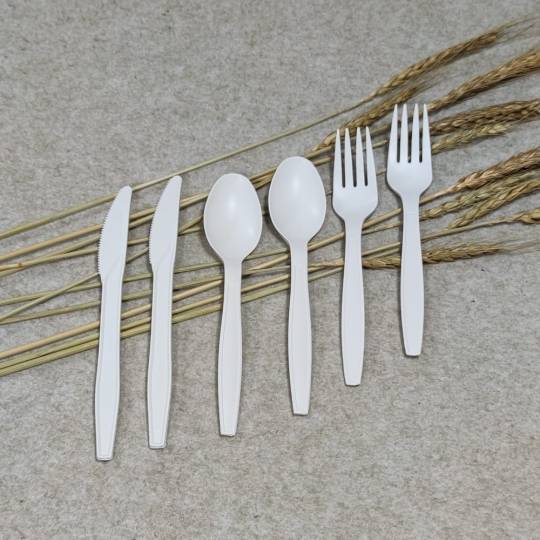
1. Plastic Utensils = Permanent Pollution
Over 40 billion plastic utensils are discarded annually in the U.S. alone. These utensils are not recyclable and typically end up in landfills or oceans. In contrast, compostable bamboo forks, spoons, and knives or cornstarch alternatives decompose within months.
2. Designed for Compost, Not the Trash
Biodegradable cutlery—especially those certified to EN13432 or ASTM D6400 standards—breaks down safely in industrial composting systems. This means restaurants and caterers using compostable food service cutlery can help divert waste from landfills.
3. Performance That Matches Plastic
Thanks to advancements in material engineering, heat-resistant biodegradable cutlery made from PLA, CPLA, and cornstarch can now match plastic in durability. These utensils can handle hot foods up to 120°C without warping or breaking.
4. Safe, Non-Toxic, and BPA-Free
Plastics often leach toxins when exposed to heat. By contrast, eco-friendly cornstarch cutlery and PLA biodegradable cutlery are BPA-free, food-safe, and approved for use in schools, hospitals, and eco-conscious households.
5. Cost-Effective in Bulk
Sustainability doesn’t have to be expensive. Bulk biodegradable cutlery sets and wholesale biodegradable cutlery packs now cost only slightly more than plastic alternatives—and prices continue to drop as adoption increases.
6. Custom Branding Adds Value
Brands can opt for custom printed biodegradable wooden cutlery to build eco-friendly brand equity. These laser-engraved utensils communicate purpose while serving practicality.
7. Aligned with Global Policy Shifts
From the European Union to India and California, single-use plastic bans are now law. Businesses that adopt plant-based disposable cutlery early position themselves for long-term compliance and growth.
8. Backed by Consumer Preference
Recent studies show that 76% of consumers prefer packaging and utensils that are compostable. Offering disposable eco cutlery for catering or delivery can boost customer satisfaction and retention.
9. Ideal for All Foodservice Channels
Biodegradable cutlery is now standard in:
Corporate cafeterias
Airport lounges
Catering for weddings and festivals
Quick-service restaurants
Whether for dine-in, delivery, or events, these utensils meet every operational need.
10. Trusted Suppliers Make the Switch Easier
Reliable partners like Xiamen Bioleader offer full-service biodegradable solutions: from cornstarch biodegradable cutlery sets to custom-printed knives, forks, and spoons. Their certified production process ensures both quality and compliance.
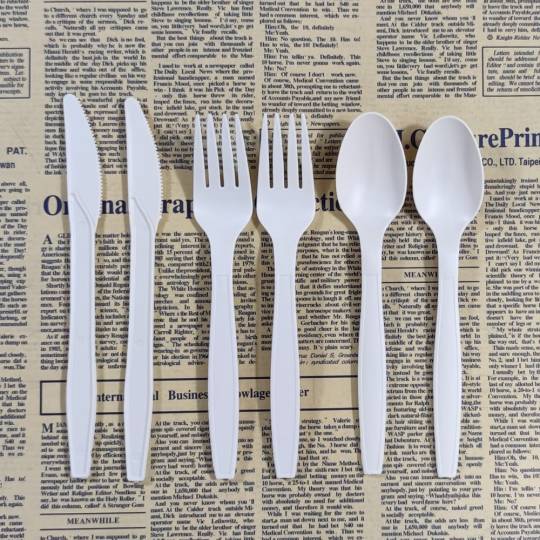
Expert Opinion: The Future of Disposable Utensils
"Biodegradable cutlery represents a fundamental shift in how we think about waste and responsibility in foodservice," says Dr. Elaine Morris, Sustainability Analyst at the Institute for Circular Design. "Innovations in plant-based materials and composting logistics are making it not only feasible but essential for businesses to replace plastic utensils. Companies that act now won’t just reduce their environmental footprint—they’ll future-proof their brand."
Final Thoughts: Cut Plastic, Not Corners
The shift to sustainable compostable cutlery kits isn’t about following a trend—it’s about future-proofing your food business. With eco-aware consumers, stricter regulations, and affordable options, now is the time to act.
One fork, one spoon, one knife at a time—we can cut down plastic waste with every bite.
#biodegradable cutlery#bulk biodegradable cutlery sets#compostable bamboo forks spoons knives#disposable biodegradable cutlery for events#eco-friendly cornstarch cutlery#custom printed biodegradable wooden cutlery#PLA biodegradable cutlery suppliers#wholesale biodegradable cutlery packs#biodegradable cutlery for restaurants#compostable food service cutlery#plant-based disposable cutlery#heat-resistant biodegradable cutlery#cornstarch biodegradable cutlery set#biodegradable carryout cutlery utensils#disposable eco cutlery for catering#sustainable compostable cutlery kits#compostable catering utensils#green restaurant supplies#eco foodservice cutlery#biodegradable utensils wholesale
0 notes
Text
7 Powerful Ways Takeaway Food Containers Are Redefining the Future of Packaging
In today’s fast-paced, convenience-driven world, takeaway food containers have become an inseparable part of modern lifestyles. Whether you’re grabbing lunch from your favorite café or ordering dinner to your doorstep, these containers are silently facilitating the global food movement. Yet beneath their simplicity lies a complex narrative of health, environment, material science, and sustainable innovation. This blog explores how takeaway food containers are transforming industries, shaping consumer habits, and driving the future of eco-conscious food packaging.
1. The Hidden Influence of Takeaway Food Containers
Takeaway food containers are more than mere vessels; they are silent influencers in consumer choices, waste streams, and sustainability strategies. In 2023 alone, over 250 billion takeaway containers were used globally—a number projected to rise with the growth of online food delivery services. Restaurants, food trucks, and cloud kitchens now rely heavily on single-use packaging to ensure food quality and hygiene.
This unprecedented rise invites scrutiny into what these containers are made of, how they affect the planet, and what innovations are shaping their evolution.
2. From Plastic to Plant-Based: Material Evolution
For decades, traditional plastic dominated the takeaway packaging market due to its low cost and structural strength. However, as awareness of plastic pollution and its long-term ecological effects has surged, industries have been pivoting toward sustainable alternatives.
Key Sustainable Alternatives:
Bagasse (Sugarcane Fiber): A by-product of sugar production, bagasse is 100% biodegradable and compostable, offering superior heat resistance and sturdiness.
Cornstarch Bioplastics: Made from renewable resources, these containers mimic plastic’s functionality without its environmental cost.
Kraft Paper: Recyclable, durable, and visually appealing, kraft paper is commonly used for boxes and wraps.
Scientific research confirms that compostable containers made from bagasse and cornstarch degrade 80–90% faster than petroleum-based plastics, making them a critical step toward reducing landfill waste.
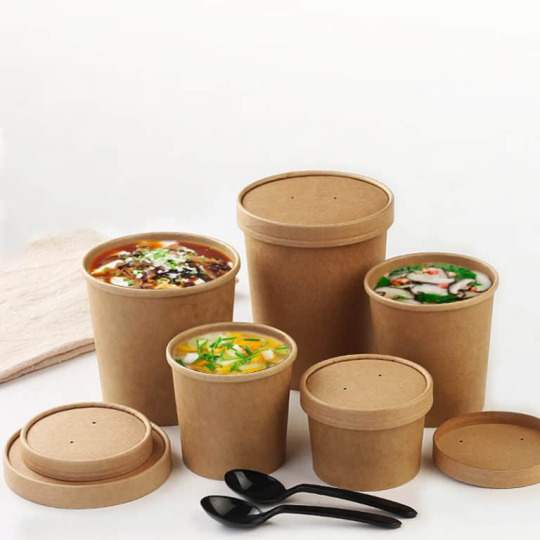
3. Health Risks: What’s in Your Food Container?
Many consumers don’t realize that traditional plastic takeaway containers can leach chemicals into food—especially when used for hot or greasy meals. BPA (Bisphenol-A), phthalates, and other toxic additives have been linked to endocrine disruption, reproductive issues, and even certain cancers.
Fortunately, most eco-friendly alternatives are naturally BPA-free. For instance, sugarcane bagasse and kraft paper contain no synthetic additives, making them safer choices for both hot and cold foods.
4. How Consumer Behavior Is Driving the Shift
As millennials and Gen Z consumers prioritize health, sustainability, and ethical brands, demand for environmentally responsible takeaway food containers is rising. According to surveys, 71% of customers say they’re more likely to return to a restaurant that uses eco-friendly packaging.
Restaurants and foodservice providers are catching on. Major brands have begun transitioning from plastic to compostable containers not only to reduce waste, but to meet consumer expectations and comply with new environmental regulations.
5. Case Studies: Real Impact in Real Kitchens
1. Urban Green Bistro (Los Angeles)
Switched from plastic to bagasse clamshell containers. Customer satisfaction scores increased by 18%, and waste pickup frequency dropped by 30%.
2. Bioleader’s Product Deployment
Bioleader’s sugarcane-based containers have been adopted by over 1,000 restaurants across Europe and Asia. Their certified compostable containers help businesses meet regulatory standards while strengthening eco-branding.
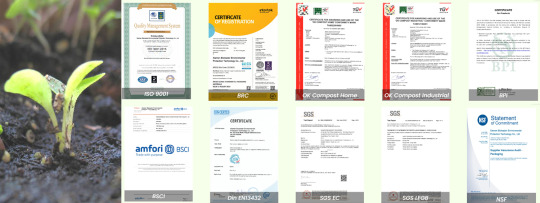
3. DeliveryHub (UK-based food delivery platform)
Launched a “Green Packaging Pledge,” requiring restaurant partners to transition to biodegradable or compostable containers. As a result, platform engagement grew by 12% in eco-conscious customer segments.
6. Economic Value vs. Environmental Cost
While sustainable takeaway food containers may initially appear costlier, their long-term benefits outweigh the expense. Businesses report:
Lower waste management costs
Improved brand loyalty
Compliance with regional plastic bans (increasing globally)
Furthermore, studies indicate that investing in sustainable packaging can lead to a 25% increase in net customer retention.
7. The Future: Smart and Circular Packaging
The future of takeaway food containers lies in smart, circular solutions. Researchers are developing edible packaging, self-decomposing containers, and blockchain-based traceability for packaging lifecycle tracking.
Meanwhile, governments are stepping in. More than 40 countries have announced policies banning or taxing non-recyclable food containers, further accelerating the transition to compostable alternatives.
Conclusion: Why It Matters More Than Ever
Takeaway food containers are no longer just a matter of convenience. They now reflect your brand’s values, environmental commitment, and consumer promise. By choosing compostable, plant-based materials like bagasse, cornstarch, and kraft paper, food businesses are making bold steps toward a cleaner, healthier future.
These containers are not just changing how we eat—they're changing the world. And that’s something worth packaging with purpose.
#takeaway food containers#disposable food packaging#eco-friendly take out containers#compostable food boxes#biodegradable takeaway packaging#BPA-free containers#bagasse containers#cornstarch containers#kraft paper food packaging#sustainable restaurant supplies#plastic alternative food packaging#eco packaging manufacturer#compostable takeaway boxes#food delivery containers#restaurant to-go containers#food grade takeaway boxes#biodegradable clamshell#plastic-free food packaging#green foodservice products#reusable vs disposable containers
0 notes
Text
Top 10 Biodegradable Plates Manufacturers & Suppliers in China (2025)
Introduction
As global awareness of environmental sustainability grows, the demand for biodegradable plates has surged. These eco-friendly alternatives to traditional plastic tableware are designed to decompose naturally, reducing pollution and conserving resources. China, being a major manufacturing hub, hosts numerous companies specializing in biodegradable plates, catering to both domestic and international markets.
Understanding Biodegradable Plates: Types, Materials, and Features
Biodegradable plates are crafted from natural materials that break down over time without harming the environment. Common materials include:
Bagasse: A byproduct of sugarcane processing, known for its sturdiness and compostability.
Cornstarch: Derived from corn, offering a smooth texture and biodegradability.
Bamboo: A rapidly renewable resource, providing strength and a natural aesthetic.
Palm Leaves: Naturally fallen leaves pressed into shape, offering unique patterns and rigidity.
Key features of biodegradable plates:
Eco-Friendly: Break down naturally, reducing landfill waste.
Compostable: Can be composted in industrial facilities or home composting systems.
Microwave & Freezer Safe: Suitable for various food temperatures.
Oil & Water Resistant: Ideal for a range of cuisines.
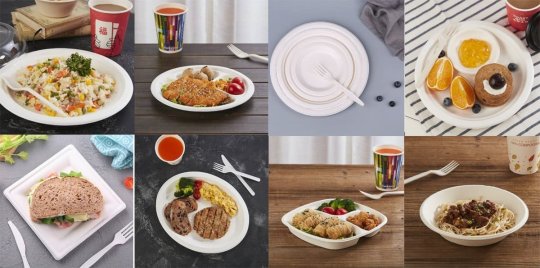
Top 10 Biodegradable Plates Manufacturers & Suppliers in China
China’s biodegradable plate industry is booming, with several companies leading the charge in innovation and sustainability. Below is a curated list of the top 10 manufacturers and suppliers in 2025:
Ranking Table
Rank Company Name Main Products
1 Bioleader Bagasse plates, clamshells, trays
2 Guangzhou Jianxin Plastic Products Co., Ltd. Cornstarch plates, biodegradable tableware
3 Guangdong Shaoneng Group Luzhou Technology Development Co., Ltd.Sugarcane pulp plates, eco-friendly tableware
4 MVI ECOPACK Biodegradable disposable tableware
5 Hongsheng Compostable plates, eco packaging
6 You Cheng Bamboo plates, sustainable tableware
7 Hyde Group Biodegradable plates, eco-friendly products
8 Ecolink Bagasse plates, compostable tableware
9 GREENJOY Biodegradable plates, eco packaging
10 Guangzhou Maibao Package Co., Ltd. Disposable plates, sustainable packaging
1. Bioleader
Main Products: Specializes in bagasse plates, clamshells, and trays, offering a wide range of biodegradable tableware solutions.
Location: Xiamen, Fujian, China
Company Size: Employs over 200 staff members, with a dedicated R&D team focusing on sustainable packaging innovations.
Certifications: Holds certifications such as BPI, EN13432, and FDA, ensuring product quality and compliance with international standards.
Product Impact: Bioleader’s products are widely used in the foodservice industry, contributing to significant reductions in plastic waste.
Contact Information: Xiamen Bioleader Environmental Protection Technology Co., Ltd No.39 Xinglong Road, Xiamen, Fujian, China Contact: Junso Zhang (Mr.)
Website:www.bioleaderpack.com
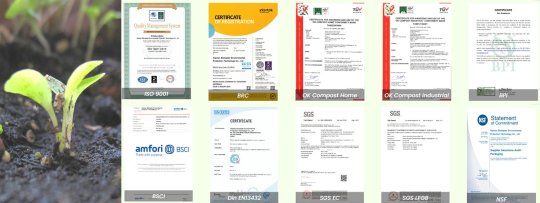
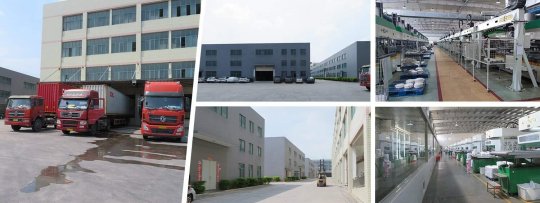
2. Guangzhou Jianxin Plastic Products Co., Ltd.
Main Products: Offers a variety of cornstarch-based plates and biodegradable tableware, catering to eco-conscious consumers.
Location: Guangzhou, China
Company Size: A large-scale manufacturer with over 500 employees, focusing on sustainable product development.
3. Guangdong Shaoneng Group Luzhou Technology Development Co., Ltd.
Main Products: Produces sugarcane pulp plates and a range of eco-friendly tableware, emphasizing renewable resources.
Location: Guangdong, China
Company Size: A prominent enterprise with over 1,000 employees, integrating research, production, and sales.
4. MVI ECOPACK
Main Products: Specializes in biodegradable disposable tableware, including plates made from renewable plant fibers.
Location: China
Company Size: Employs approximately 300 staff members, with a strong emphasis on eco-friendly packaging solutions.
5. Hongsheng
Main Products: Offers a range of compostable plates and eco-friendly packaging options, focusing on sustainability.
Location: China
Company Size: A mid-sized company with around 200 employees, dedicated to green product innovation.
6. You Cheng
Main Products: Specializes in bamboo plates and sustainable tableware, promoting the use of natural materials.
Location: Guilin, Guangxi, China
Company Size: Established in 2009, employs over 200 staff, and ships 30–40 containers per month to more than 50 countries worldwide.
7. Hyde Group
Main Products: Offers a range of biodegradable plates, including sugarcane bagasse and cornstarch tableware, catering to various foodservice needs.
Location: Hefei City, Anhui Province, China
Company Size: Founded in 2011, employs a significant workforce and has established a strong reputation in both domestic and international markets.
8. Ecolink
Main Products: Provides bagasse plates and compostable tableware, focusing on eco-friendly solutions for the hospitality industry.
Location: Xiamen, Fujian, China
Company Size: A dedicated team specializing in bamboo and biodegradable products, serving clients globally.
9. GREENJOY
Main Products: Produces biodegradable plates and eco-packaging, utilizing materials like PLA and PBAT for sustainable product lines.
Location: Fujian, China
Company Size: Founded in 2017, rapidly grown with a diverse range of biodegradable products and exports to numerous markets.
10. Guangzhou Maibao Package Co., Ltd.
Main Products: Offers disposable plates and sustainable packaging solutions, including biodegradable options for the foodservice industry.
Location: Guangzhou, China
Company Size: Established in 2008, employs over 90 staff members, and provides integrated packaging solutions, collaborating with renowned brands globally.
Scientific Data and Expert Insights: Industry Trends and Case Studies
The biodegradable plates industry in China is experiencing significant growth, driven by increasing environmental awareness and regulatory support. Studies indicate that the global biodegradable tableware market is projected to grow at a CAGR of over 5% from 2021 to 2026. This growth is attributed to the rising demand for sustainable alternatives to plastic and the implementation of stringent environmental regulations.
Experts emphasize the importance of material innovation in this sector. The use of bagasse, a byproduct of sugarcane processing, not only utilizes agricultural waste but also reduces reliance on wood-based products, thereby conserving forests.
Case Study: Bioleader’s Impact Bioleader, a leading manufacturer of bagasse plates, has successfully implemented sustainable practices in its operations. By utilizing sugarcane waste to produce biodegradable tableware, the company contributes to waste reduction and offers eco-friendly alternatives to plastic. Their products have gained international recognition, aligning with global sustainability goals.
Conclusion
The shift towards biodegradable plates in China reflects a broader commitment to environmental sustainability and innovation. Companies like Bioleader, Guangzhou Jianxin Plastic Products Co., Ltd., Guangdong Shaoneng Group Luzhou Technology Development Co., Ltd., MVI ECOPACK, Hongsheng, You Cheng, Hyde Group, Ecolink, GREENJOY, and Guangzhou Maibao Package Co., Ltd. are at the forefront of this transformation, offering diverse and eco-friendly tableware solutions.
As the demand for sustainable products continues to rise, these manufacturers play a crucial role in shaping a greener future, both domestically and globally.
#biodegradable plates#compostable plates#eco-friendly tableware#sustainable packaging#bagasse plates#sugarcane plates#bamboo plates#cornstarch plates#biodegradable tableware#disposable eco plates#green packaging solutions#biodegradable dinnerware#eco-friendly disposable plates#sustainable tableware manufacturers#biodegradable plate suppliers#compostable dinnerware#eco-conscious packaging#biodegradable food containers#plant-based plates#biodegradable packaging China
0 notes
Text
Top 10 Sugarcane Bagasse Tableware Manufacturers & Suppliers in China (2025)
Introduction
In the global transition toward sustainable foodservice solutions, biodegradable food packaging is quickly replacing conventional plastic. Among the most promising materials is sugarcane bagasse—a byproduct of sugarcane processing that is lightweight, strong, and fully compostable. As eco-regulations tighten and consumer awareness grows, China has emerged as a major production hub for compostable tableware. This article outlines the top 10 sugarcane bagasse tableware manufacturers in China for 2025.
Types of Biodegradable Food Packaging
Biodegradable packaging comes in a range of materials designed to break down naturally after disposal. Key types include:
Sugarcane Bagasse – Molded pulp from sugarcane fiber, used for plates, bowls, and trays
Cornstarch – Often used for cutlery, straws, and containers
Paper & Kraft Paper – Renewable but often coated, requiring chemical treatment
PLA & CPLA – Bioplastics derived from plant starch, often used in cups and lids
Shared characteristics:
Fully compostable (some home, some industrial)
Plant-based and fossil-free
Safe for food contact
Often heat- and cold-resistant
Top 10 Biodegradable Food Packaging Manufacturers in China
Here are the top 10 suppliers of sugarcane bagasse tableware in China, based on product quality, certifications, market reputation, and sustainability focus:
RankCompany NameMain Products1Xiamen Bioleader Environmental Protection Technology Co., Ltd.Sugarcane bagasse tableware, cornstarch containers2GangXuan Eco-PackBagasse plates, clamshells, trays3ZX PackingSugarcane bagasse cutlery, plates4Hefei Craft Tableware Co., Ltd.Biodegradable plates, bowls, trays5Shenglin PackagingBagasse tableware, paper cups, boxes6MVI ECOPACKBagasse plates, disposable trays7Lafu PackagingSugarcane party supplies8Guangzhou Huaheng Plastic Products Co., Ltd.Oval plates, eco disposable tableware9Shanghai EGS Industry Co., Ltd.Biodegradable plates and cutlery10Wuhan Heepack Environmental Tech Co., Ltd.Bagasse plates, bowls, paper cups
1. Xiamen Bioleader Environmental Protection Technology Co., Ltd.
Main Products:
Sugarcane bagasse tableware
Cornstarch cutlery and boxes
Paper bowls and compostable trays
Location:
Xiamen, Fujian Province, China
Scale:
101–200 employees
Serving both OEM/ODM clients globally
Certifications:
FDA, BPI, OK Compost, ISO9001
Impact: Bioleader is widely recognized for its PFAS-free, plastic-free bagasse packaging and deep export experience. It partners with foodservice chains and distributors globally to deliver consistent, sustainable alternatives.
Contact Information:
Xiamen Bioleader Environmental Protection Technology Co., Ltd.
Address: No.39 Xinglong Road, Xiamen, Fujian, China
Contact: Junso Zhang (Mr.)
Website:www.bioleaderpack.com

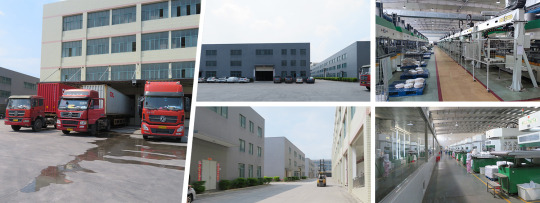
2. GangXuan Eco-Pack
Main Products:
Bagasse trays, plates, and clamshells
Location:
Guangxi, China
Scale:
300+ employees, five production lines
Impact: A rapidly growing enterprise with extensive global supply capabilities and advanced molding technologies.
3. ZX Packing
Main Products:
Bagasse plates, cups, and eco cutlery
Location:
China
Scale:
Mid-sized operation with skilled engineers
Impact: Known for customizable sugarcane fiber products in bulk orders, especially for Western markets.
4. Hefei Craft Tableware Co., Ltd.
Main Products:
High-durability bagasse plates and trays
Location:
Hefei, Anhui Province
Scale:
500+ employees, listed company
Impact: Pioneer in biodegradable innovation and large-scale delivery to hospitality sectors across Asia and Europe.
5. Shenglin Packaging
Main Products:
Sugarcane bagasse and kraft paper packaging
Location:
Ningbo, Zhejiang Province
Scale:
400+ employees
Impact: Combines print branding and packaging innovation for retailers and takeaway brands.
6. MVI ECOPACK
Main Products:
Compostable sugarcane trays and containers
Location:
Suzhou, Jiangsu Province
Scale:
250+ employees
Impact: A design-forward factory producing heat-resistant bagasse lines for bakery, deli, and airline service.
7. Lafu Packaging
Main Products:
Event-grade bagasse and compostable partyware
Location:
Guangzhou
Scale:
200 employees
Impact: Trendy, vibrant line of biodegradable event supplies with bulk availability for export.
8. Guangzhou Huaheng Plastic Products Co., Ltd.
Main Products:
Oval biodegradable plates and serving trays
Location:
Guangzhou
Scale:
150 employees
Impact: An early mover transitioning from plastic to bagasse to meet global demand for eco-compliance.
9. Shanghai EGS Industry Co., Ltd.
Main Products:
Sugarcane bagasse cutlery and round plates
Location:
Shanghai
Scale:
100+ staff
Impact: Supplies retailers across Europe with compostable solutions approved under EN13432 standards.
10. Wuhan Heepack Environmental Tech Co., Ltd.
Main Products:
Biodegradable sugarcane bowls and cup lids
Location:
Wuhan, Hubei Province
Scale:
120+ employees
Impact: Efficient mid-scale producer of molded pulp tableware, expanding toward global OEM partnerships.
Scientific Support for Bagasse Tableware
According to multiple environmental studies, sugarcane bagasse products:
Break down in under 90 days in composting conditions
Are 100% PFAS-free, BPA-free, and non-toxic
Emit 70–90% less CO₂ compared to petroleum plastics
Require no deforestation, as bagasse is an agricultural waste material
Case Insight: One major chain store in Asia reduced its packaging waste by over 90% in just 12 months by switching entirely to bagasse packaging from Bioleader.
Conclusion
With growing demand for green alternatives, sugarcane bagasse tableware is transforming the foodservice and retail packaging landscape. From high-output exporters like Bioleader to specialized innovators like MVI and Lafu, China’s biodegradable packaging sector is leading the world in affordability, quality, and eco-compliance. Choosing certified, compostable packaging not only aligns with regulatory trends but also builds sustainable brand value.
0 notes
Text
Top 10 Biodegradable Food Packaging Manufacturers & Suppliers in China (2025)
Introduction to Biodegradable Food Packaging
As environmental concerns escalate globally, businesses and consumers alike are turning toward sustainable alternatives, notably biodegradable food packaging. Traditional plastic packaging contributes heavily to pollution, taking centuries to degrade and often ending up in oceans, harming wildlife and ecosystems. In contrast, biodegradable food packaging naturally decomposes into organic matter within months, offering a practical, sustainable solution to global waste challenges.

Types, Materials, and Characteristics of Biodegradable Food Packaging
Biodegradable food packaging encompasses a variety of eco-friendly materials, each with distinct properties suited to different uses. Here are some prominent types:
Bagasse (Sugarcane Fiber): Derived from sugarcane residues, it is sturdy, heat-resistant, microwave-safe, and compostable within 90 days. It is extensively used for plates, bowls, and food containers.
Cornstarch-based PLA and CPLA: Made from fermented plant starch; PLA is transparent and suitable for cold foods, while CPLA withstands higher temperatures, making it ideal for utensils and hot food containers. Both degrade completely within industrial composting environments in 60–180 days.
Kraft Paper: A recyclable, biodegradable, and versatile packaging material often used for food wraps, boxes, and bags. Kraft paper packaging is compostable within about 60 days when uncoated or coated with biodegradable materials.
Bamboo and Palm Leaves: Used primarily for upscale disposable tableware, these materials decompose naturally and have antimicrobial properties, offering both durability and aesthetic appeal.
These materials collectively support sustainable consumption, significantly reducing landfill volumes and pollution.
Top 10 Biodegradable Food Packaging Manufacturers & Suppliers in China
China has rapidly become a global leader in producing high-quality biodegradable food packaging. Below is a curated list of the top 10 manufacturers and suppliers:
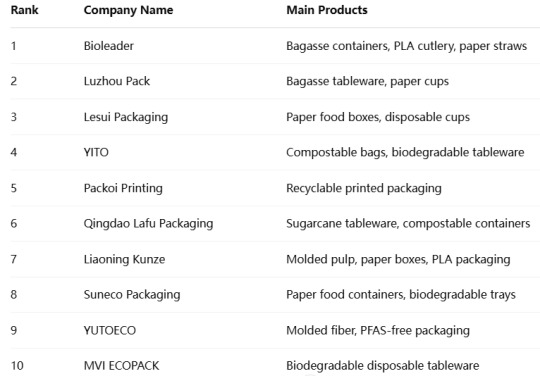
1. Bioleader
Main Products: Bioleader specializes in biodegradable food packaging solutions including bagasse containers, PLA and CPLA cutlery, and compostable paper straws. Known for high-quality production standards and innovation in sustainable materials.

Location and Scale: Bioleader is headquartered in Xiamen, Fujian Province, China, operating a sizable production facility staffed by a skilled workforce.
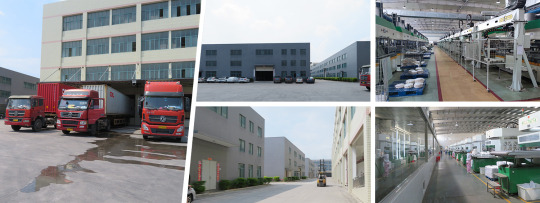
Certifications and Impact: The company holds international certifications such as BPI, OK Compost, and FDA approvals. Its products have significantly reduced plastic usage worldwide, particularly in foodservice sectors.
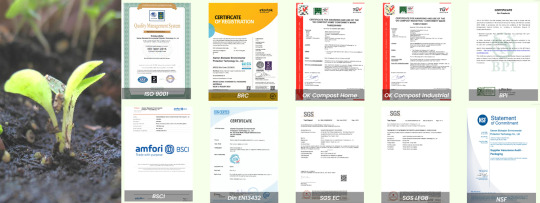
Contact Information:
Website: www.bioleaderpack.com
Address: No.39 Xinglong Road, Xiamen, Fujian, China
Contact: Junso Zhang (Mr.)
2. Luzhou Pack
Main Products: Luzhou Pack primarily offers bagasse-based tableware and disposable paper cups. Renowned for durability and eco-friendly credentials.
Location and Scale: Located in Guangdong, Luzhou Pack is a subsidiary of Shaoneng Group, a publicly-listed company with extensive resources and a workforce exceeding 500 employees.
3. Lesui Packaging
Main Products: Lesui Packaging produces biodegradable paper food boxes, disposable cups, and bakery packaging, focusing on sustainability and functionality.
Location and Scale: Based in Zhejiang Province, Lesui employs over 300 workers and has substantial domestic and international market presence.
4. YITO
Main Products: YITO offers compostable bags, biodegradable tableware, and custom packaging solutions, emphasizing circular economy principles.
Location and Scale: The company is headquartered in Jiangsu Province, employing approximately 250 people and operating advanced production facilities.
5. Packoi Printing
Main Products: Specializes in customizable recyclable packaging products, including biodegradable printed boxes and bags.
Location and Scale: Founded in 1998, Packoi Printing operates in Guangdong Province with over 200 employees, catering to various global markets.
6. Qingdao Lafu Packaging Technology
Main Products: Qingdao Lafu manufactures sugarcane bagasse tableware and compostable food containers known for strength, heat-resistance, and rapid biodegradability.
Location and Scale: Located in Qingdao, Shandong Province, the company has around 150 employees and is recognized for its commitment to sustainability.
7. Liaoning Kunze
Main Products: Kunze specializes in molded pulp packaging, biodegradable paper boxes, and PLA-based products.
Location and Scale: Based in Liaoning Province, the company employs over 200 professionals and operates state-of-the-art production lines.
8. Suneco Packaging
Main Products: Suneco provides biodegradable paper containers and molded fiber trays widely used in takeout and catering industries.
Location and Scale: Operating from Zhejiang Province, the company maintains about 150 staff members dedicated to sustainable innovation.
9. YUTOECO
Main Products: Offers PFAS-free molded fiber packaging, highly regarded for its biodegradability, strength, and safety for food applications.
Location and Scale: Based in Shenzhen, Guangdong Province, YUTOECO is part of the publicly-listed YUTO Tech Group, employing over 1,000 staff.
10. MVI ECOPACK
Main Products: Supplies a broad array of biodegradable disposable tableware, including compostable cutlery, PLA cups, and cornstarch-based food boxes.
Location and Scale: Headquartered in Jiangsu Province with approximately 120 employees, MVI ECOPACK is renowned for adhering strictly to international biodegradability standards.
Scientific Data and Expert Insights on Biodegradable Packaging
Scientific research strongly supports the transition to biodegradable food packaging. According to a study published in the Journal of Cleaner Production (2022), switching to biodegradable alternatives significantly reduces landfill volume and carbon emissions, up to 70% less compared to traditional plastics.
Industry Trends and Expert Opinions: The global biodegradable packaging market is projected to grow at approximately 14.6% CAGR through 2030 (Grand View Research, 2023). Experts emphasize that increasing consumer awareness, governmental regulations, and corporate sustainability goals will drive continued adoption.
Real-World Case Study – Bioleader’s Impact: Bioleader partnered with a prominent airline to replace plastic trays with bagasse products. This resulted in an 85% reduction in onboard plastic waste, improved customer satisfaction scores, and elevated the airline’s sustainability credentials.
Conclusion: Embracing Biodegradable Food Packaging
As environmental challenges grow, the shift toward biodegradable food packaging becomes essential. Companies like Bioleader, Luzhou Pack, and others are at the forefront, demonstrating how sustainability can coexist profitably with innovation and consumer demand. Embracing biodegradable packaging isn't merely beneficial—it's necessary for a sustainable future.
#biodegradable food packaging#compostable packaging#PLA containers#CPLA utensils#kraft paper boxes#cornstarch packaging#eco-friendly containers#sustainable foodservice packaging#biodegradable packaging China
0 notes
Text
Top 10 Biodegradable Tableware Manufacturers & Suppliers in China (2025)
Introduction to Biodegradable Tableware
In response to escalating environmental concerns and the global movement towards sustainability, biodegradable tableware has emerged as a pivotal solution in the foodservice industry. These eco-friendly alternatives to conventional plastic utensils and dishes are designed to decompose naturally, thereby mitigating pollution and reducing landfill waste. The adoption of biodegradable tableware not only aligns with environmental regulations but also caters to the growing consumer demand for sustainable products.

Types, Materials, and Characteristics of Biodegradable Tableware
Types of Biodegradable Tableware
Biodegradable tableware includes:
Plates and Bowls: For serving hot meals and soups.
Cups and Lids: Suitable for both cold and hot beverages.
Cutlery: Spoons, forks, and knives for disposable use.
Food Containers and Trays: Used for takeaway, meal prep, and packaging.
Materials Used
Sugarcane Bagasse: A fibrous by-product of sugar production. It's sturdy, heat-resistant, and fully compostable.
Cornstarch: Molded into cutlery and containers; biodegradable and non-toxic.
PLA (Polylactic Acid): A plant-based bioplastic, typically used for transparent cups and lids.
Bamboo & Wood: Fast-growing renewable resources used for cutlery and elegant presentation items.
Key Characteristics
100% biodegradable and compostable.
Oil- and water-resistant.
Microwave- and freezer-safe.
Certified food-safe and toxin-free.
Top 10 Biodegradable Tableware Manufacturers & Suppliers in China
China has rapidly become the global leader in biodegradable tableware production. Below is a curated list of the top manufacturers in 2025: RankCompany NameMain Products1BioleaderSugarcane bagasse tableware, cornstarch cutlery2MVI ECOPACKCompostable packaging solutions3You ChengBamboo-based disposable plates4Hyde GroupPLA-based cutlery and food containers5EcolinkCustomizable eco-friendly packaging6GREENJOYSugarcane trays, clamshells7HongtaiKraft paper and food-safe packaging8HongshengSugarcane fiber plates and bowls9OWNFOLKWooden cutlery and food containers10UGreenPakBioplastics and molded pulp products
1. Bioleader
Brand: Bioleader Main Products: Sugarcane bagasse clamshells, bowls, plates, trays, cups, and cornstarch cutlery Location: Xiamen, Fujian Scale: 150+ employees Certifications: ISO9001, FDA-SGS, EN13432, ASTM6400, OK Compost, BPI, BRC, NSF Market Influence: Bioleader has become a preferred supplier for international foodservice chains and airlines, known for strict quality control and sustainability leadership.

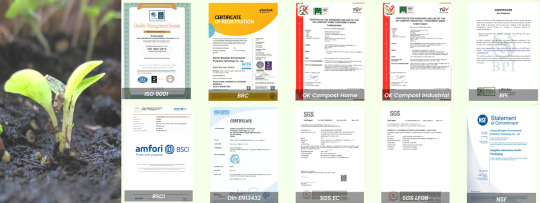
Contact Info: Website: www.bioleaderpack.com Company: Xiamen Bioleader Environmental Protection Technology Co., Ltd Address: No.39 Xinglong Road, Xiamen, Fujian, China Contact: Junso Zhang (Mr.)
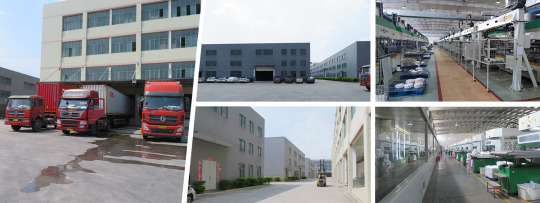
2. MVI ECOPACK
Main Products: Compostable packaging including PLA-lined cups, food trays, and utensils Location: Zhejiang Scale: ~100 employees Highlights: Offers sustainable packaging made from annually renewable materials. Known for batch consistency and custom printing capabilities.
3. You Cheng
Main Products: Disposable bamboo plates and trays, custom foodservice packaging Location: Guilin, Guangxi Scale: ~80 employees Highlights: Focuses on biodegradable bamboo fiber tableware with high oil resistance and aesthetic finish.
4. Hyde Group
Main Products: PLA cups, bowls, and lids for cold and hot beverages Location: Henan Province Scale: ~300 employees Highlights: Known for mass production capacity and R&D in PLA materials, serving large-scale distributors and OEM clients.
5. Ecolink
Main Products: Bagasse containers, wooden utensils, and biodegradable paper straws Location: Fujian Province Scale: ~120 employees Highlights: Offers full packaging solutions including color printing, private labeling, and FSC-certified raw materials.
6. GREENJOY
Main Products: Sugarcane-based clamshell boxes, plates, trays Location: Quanzhou, Fujian Scale: ~150 employees Highlights: Large production capacity and exports to over 40 countries, including strict European compostability certifications.
7. Hongtai
Main Products: Kraft paper boxes, takeaway lunch trays Location: Hebei Province Scale: 200+ employees Highlights: Strong in food-safe, greaseproof paper technology and widely used in bakery and fast-food chains.
8. Hongsheng
Main Products: Sugarcane pulp tableware, bowls, meal boxes Location: Wenzhou, Zhejiang Scale: ~120 employees Highlights: Specializes in affordable yet premium biodegradable ware; high-volume exporter to Southeast Asia and Europe.
9. OWNFOLK
Main Products: Disposable cutlery, plates, biodegradable meal boxes Location: Xiamen, Fujian Scale: ~80 employees Highlights: Offers FSC and BSCI-compliant manufacturing, focused on wholesale custom packaging.
10. UGreenPak
Main Products: Bioplastic utensils, bagasse trays, biodegradable packaging Location: Guangdong Scale: ~100 employees Highlights: Uses renewable raw materials, offers innovative molded fiber packaging, and targets the premium eco-market.
Scientific Data & Expert Insights on Biodegradability
Scientific studies validate the environmental benefits of biodegradable tableware:
A 2022 report from the Journal of Cleaner Production shows that bagasse-based packaging emits 65% less CO₂ than petroleum-based plastics over its lifecycle.
According to a UN Environment Programme review, compostable packaging has the potential to reduce microplastic pollution by up to 90% in marine ecosystems.
Bioleader's partnership with a major Asian airline reduced plastic usage by 50% in inflight meals by switching to sugarcane trays.
Industry experts project that biodegradable packaging will grow at 13% CAGR from 2024–2030, driven by consumer awareness and government regulations.
Conclusion
As sustainability becomes a global priority, choosing biodegradable tableware is not only a responsible environmental decision but a competitive business advantage. The ten manufacturers highlighted here represent China’s strongest players in eco-packaging for 2025, delivering quality, compliance, and innovation to global markets.
#biodegradable tableware#eco friendly packaging#compostable utensils#sugarcane bagasse products#biodegradable food containers
0 notes